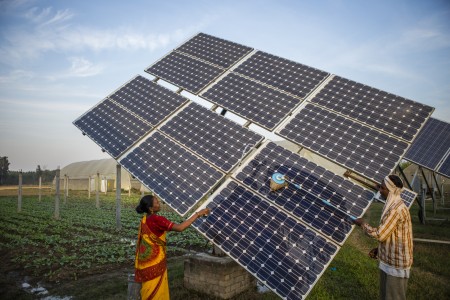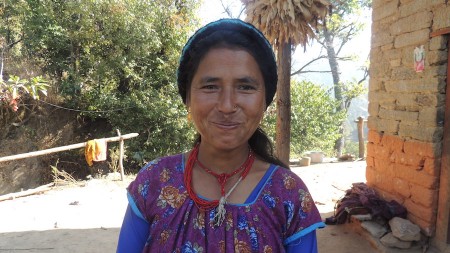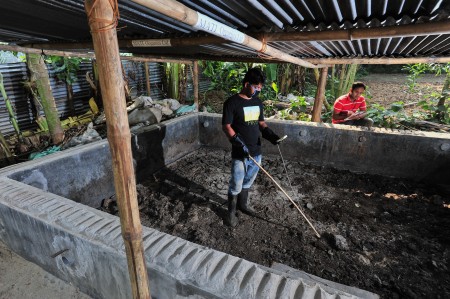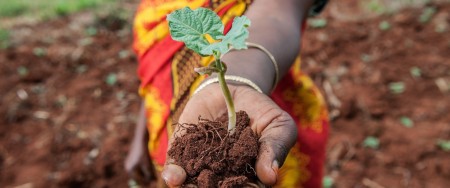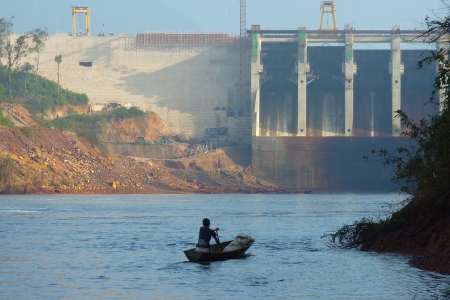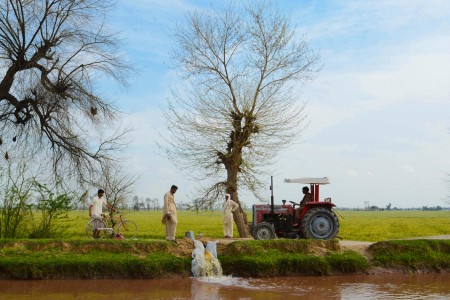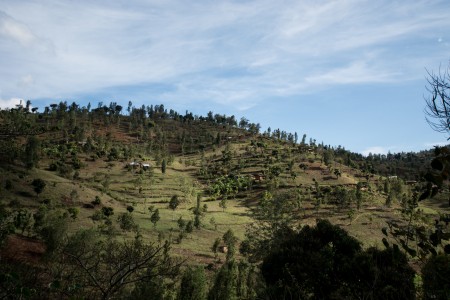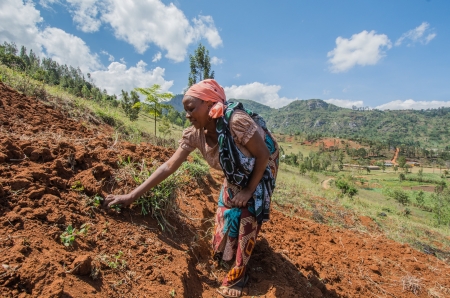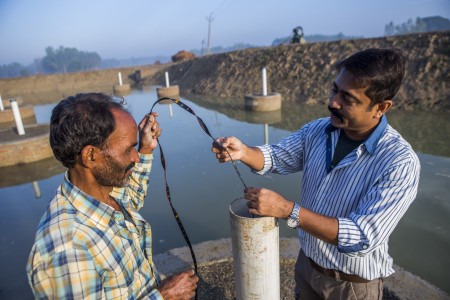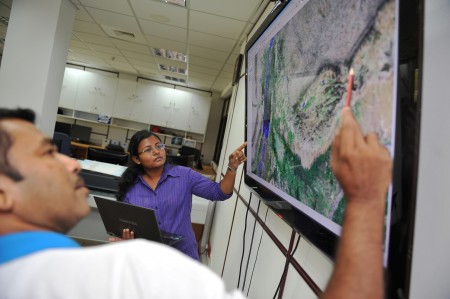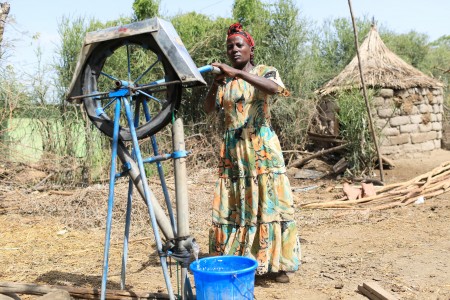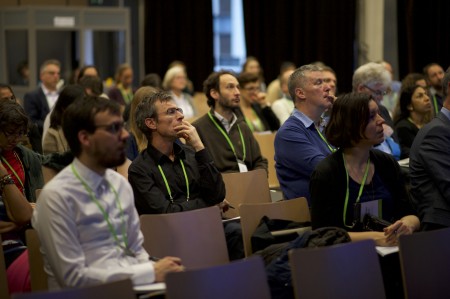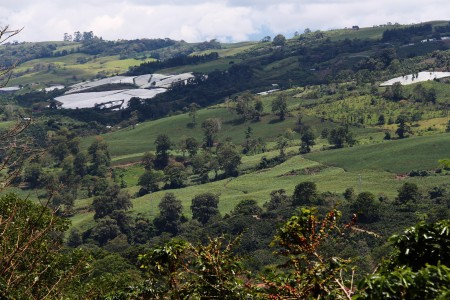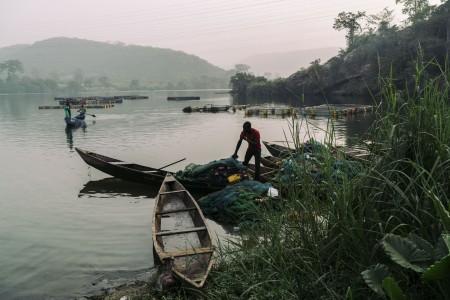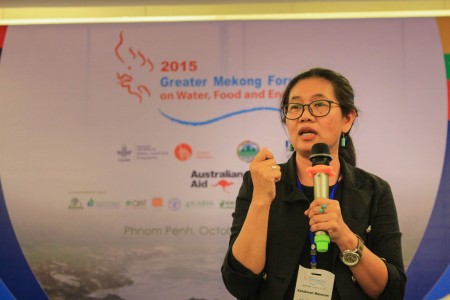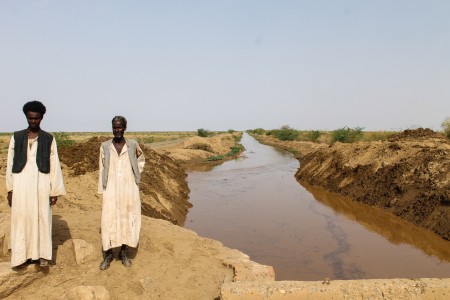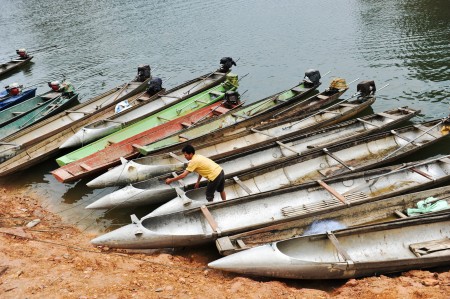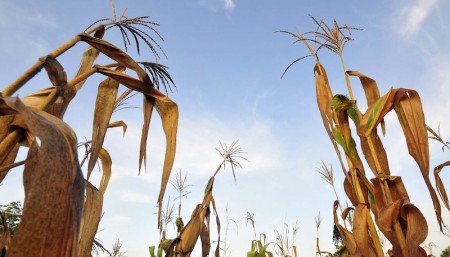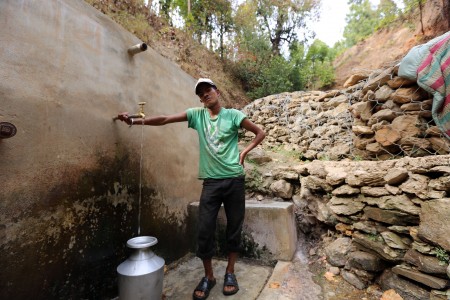The WLE 2015 Annual Report > Solutions for sustainable intensification of agriculture

Waste to wealth: Solutions that recover resources and costs for a circular economy
We have a growing and seemingly unstoppable appetite for natural resources like land, water, forests and minerals. With steady population growth, changing diet and consumption patterns, an increasingly urban population, reckless overuse of finite resources, and rising pollution due to excess nutrient run-off, humans are taking a heavy toll on the environment. To lower our ecological debt, it is urgent to start mining resources from waste instead of nature.
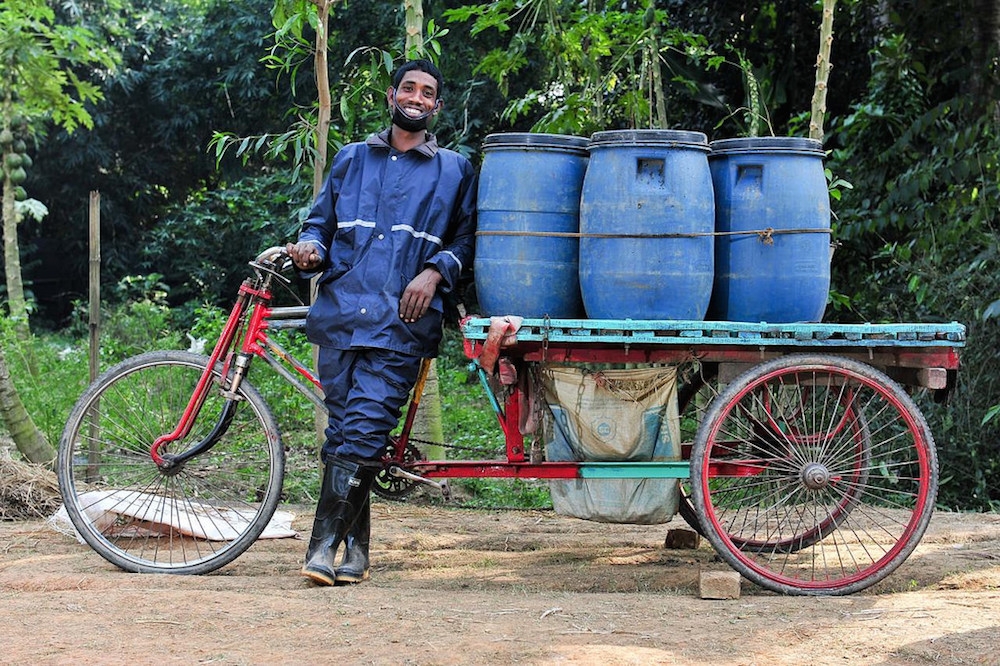
The total value of resources recovery, not just the market value
Farmers need phosphorous; the 'P' in NPK fertilizer is an essential nutrient for plant growth, building cells and transferring energy. However, this very strategic mineral resource is localized in a small number of countries and may be depleted in a few decades.
Some experts from the CGIAR Research Program on Water, Land and Ecosystems (WLE) argue that agriculture can be a sustainability change-maker by shifting from consuming the largest amount of phosphorous (currently about 90% of mined P) and instead, start recovering and efficiently reusing phosphorous from food and urban waste.
Unfortunately, recycled P cannot currently compete with the relatively low cost of mined P. WLE scientists are therefore working to demonstrate the total value of phosphorous recovery to shift the perspective of policy makers and agri-business. Recovering phosphorous brings invaluable ecosystems services, like preserving the water quality of rivers and avoiding destruction of downstream marine stock, which helps preserve the livelihoods of coastal fishing communities. Such benefits are not monetized, but economists are working to make the values of P recovery into a bankable proposition.
A business case to lower urban food and energy bills using city sewage and waste bins
By 2050, two thirds of the global population will live in cities, the majority in developing countries. Given the greater density of consumption and waste in urban areas, municipal costs will continue to increase. As such, cities are looking for options that decrease waste, reduce environmental pollution and recover costs. Resource recovery and reuse (RRR) can offer all three benefits at once.
Pay Drechsel of WLE and the International Water Management Institute (IWMI) believes that RRR should become a necessary part of future sustainable city planning.
“Instead of seeing wastewater as a source of pollution and an annoyance to be disposed of, cities could ensure it becomes usable water and creates employment opportunities. The same goes for food and solid waste, which are potential sources of organic fertilizer.”
If urban and peri-urban agriculture sourced its irrigation water and fertilizer from bins and sewage, cities could reduce their environmental footprint, create jobs and help preserve scarce resources.
While many technical options for RRR are commonly known, taking an RRR initiative from idea to full-scale development is difficult, partly because they are highly dependent on public subsidies. To break this pattern, WLE and partners have developed a framework for exploring the feasibility of RRR business models based on experiences in six mushrooming cities in the global South (Lima, Bangalore, Kampala, Hanoi, Accra and Colombo). These business models account for the financial, economic and institutional realities in each location, which helps investors decide which RRR business option is the most feasible to implement.
In 2015, WLE supported and monitored the establishment of three public-private partnerships (PPPs) in Ghana, including the production of fuel briquettes from municipal solid waste, which at scale will recycle waste from 150,000 inhabitants. Another PPP was Fortifer, organic fertilizer pellets made from municipal sludge, which was established as a brand after being officially recognized by the government of Ghana.
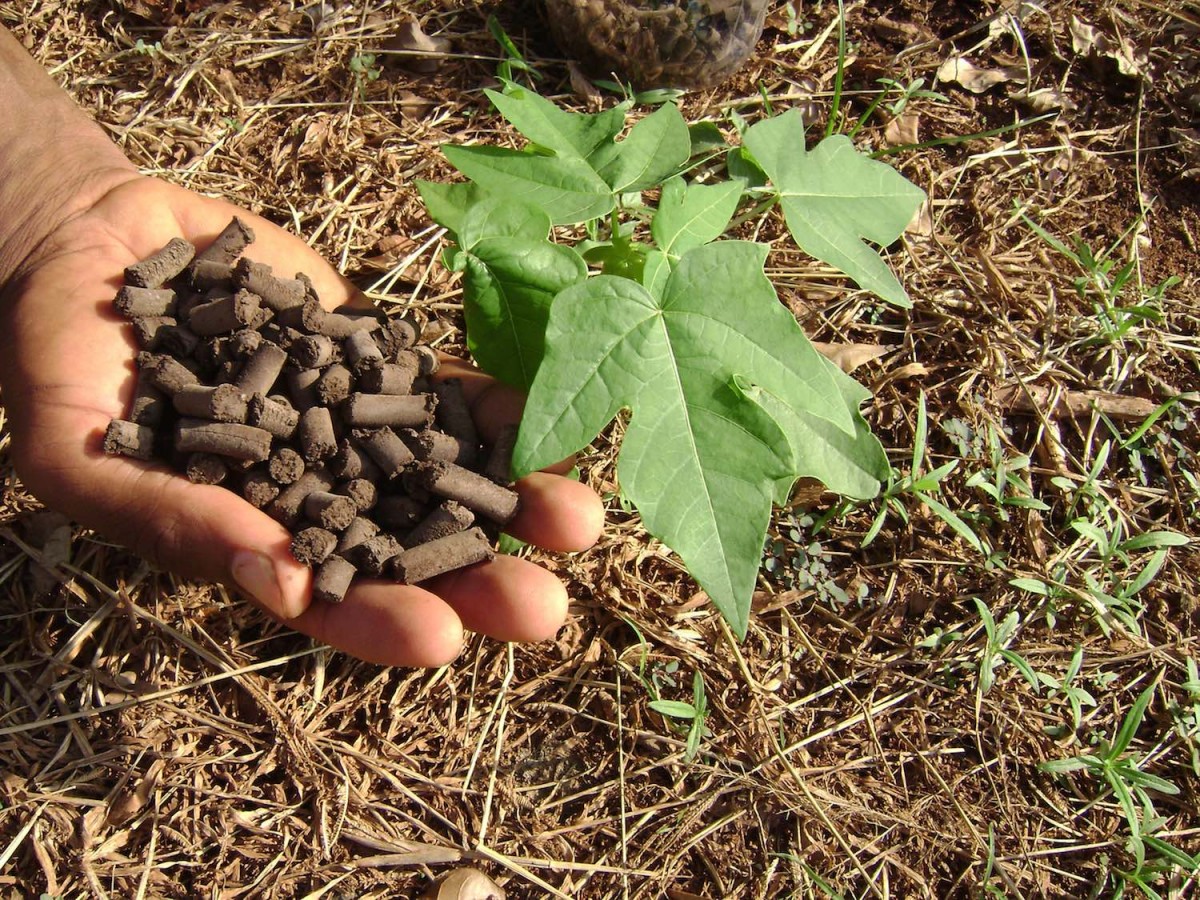
Consumers and governments are unfortunately often not ready to go the extra mile or spend the extra penny to support fair pricing of RRR products while less sustainable, more cost-competitive options exist. For recycling initiatives to take off, convincing everybody – from governments to citizens and the corporate sector – is key to get the necessary policy and financing support.
An effective partnership to reuse wastewater for food in India
In India, there are around 550 sugar industries using 3.2 Mm3 water and generating 0.6 Mm3 of effluent per day. This water intensive industry in the semi-arid state of Andhra Pradesh is leading the way for wastewater reuse and sector integration.
The RRR team has set up an innovation platform, gathering leading food companies, researchers, governmental institutions, and civil society groups to showcase and debate the pros and cons of different bio-refinery wastewater treatment options. The goal was to make the treated water safe for irrigation or fish production.
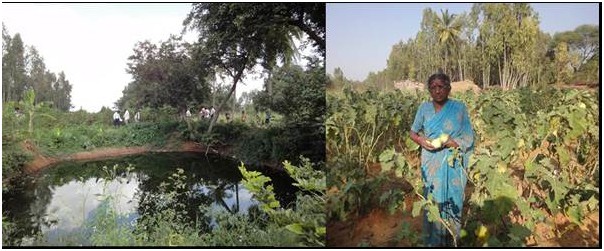
By integrating a constructed wetland to treat its effluents with a carefully designed mix of algae and bacteria for bio-treatment, a sugar plant in Lakshmipuram has become a source of freshwater for fisheries, a lucrative livelihood activity for women in the area. Irrigated by the treated water, yields of okra, aubergines and chilies have also increased by up to 40%. The constructed wetlands build on mechanisms from natural ecosystem services recommended by WLE researchers, and therefore does not require expensive treatment technology. This low-cost decentralized system has already been installed in 28 sites across India. In fact, at a recent review meeting, Indian policy-makers expressed their will to scale up such green technologies, in line with the Swachha Bharat (Clean India) governmental initiative.
As the progress in Ghana and India shows, RRR is taking off where there is interest and the right institutional and financial support. From technological innovations to facilitation and implementation of new RRR models, WLE and its partners will continue to work towards full cost recovery and reuse of precious resources.
For WLE results on RRR, see our related publication series, in particular:
- Co-composting of solid waste and fecal sludge for nutrient and organic matter recovery, RRR Series 3
- Recycling and Reuse of Treated Wastewater in Urban India, A Proposed Advisory and Guidance Document, RRR Series 8
- Testing the implementation potential of resource recovery and reuse business models: from baseline surveys to feasibility studies and business plans, RRR Series 10
Acknowledgments
- Design and development of bio-treatment technique for Decentralized Wastewater Treatment system, India, under the EU/ India Water4crops research programme coordinated in India by ICRISAT with the following partners: MS Swaminathan Research Foundation (MSSRF), National Environmental Engineering Research Institute (NEERI), The Energy Research Institute (TERI), University of Agriculture of Dharwad, University of Agriculture of Bangalore; JAIN Irrigation, KCP Sugar Industries Corporation Ltd, SAB Miller India, Ugar Sugar Works, Euro India Research Center; contact persons: Mukund Patil (m.patil@cgiar.org), Suhas P Wani (s.wani (at) cgiar.org).
- RRR Business models, lead center: IWMI; partners: Makerere University, Indian Institute of Science, Hanoi University of Agriculture, Department of Water and Sanitation in Developing Countries at the Swiss Federal Institute of Aquatic Science and Technology, International Centre for Water Management Services, Swiss Tropical and Public Health Institute, GRUPO GEA; contact persons: Miriam Otoo & Solomie Gebrezgabher (m.otoo (at) cgiar.org).
- RRR Business models in West Africa, lead center: IWMI; partners: Jekora Ventures Ltd., Volta Ghana Investment Co. Ltd., Training Research and Networking for Development, Kumasi Metropolitan Assembly, Tema Metropolitan Assembly, RUAF Foundation, International Livestock Research Institute; contact person: Nikiema, Josiane (j.nikiema (at) cgiar.org).
Agriculture 2.0:
towards a global revolution
for sustainabilitywater, land and ecosystems research highlights
2015 – 2016
A message from Johan RockströmWLE Steering Committee Chair
Agriculture 2.0
Current farming practices use 70 percent of the Earth’s fresh water, degrade 40 percent of land and contribute to 30 percent of greenhouse gas emissions.
But there is a better way: putting sustainability at the center of our food systems will not only reverse climatic degradation, but also accomplish the productivity that is necessary to feed 9 billion people by 2050.Sustainability is not just a necessity. It is an untapped opportunity for improving the livelihoods of male and female smallholders farmers, ensuring the productivity of the land into the future, and better harnessing the services provided by our ecosystems.
The CGIAR Research Program on Water, Land and Ecosystems (WLE) is doing its part to make the sustainable intensification of agriculture a reality by producing evidence-based solutions for water and land management via partnerships that span nationalities, sectors and disciplines.
We invite you to explore highlights from WLE’s work below.
in 2015 wle: field tested 62 technologies and natural resource management practices, helped 125,000 farmers to apply new technologies or management practices, supported improved technologies or management practices on 2.5 million hectares
Solutions for sustainable intensification of agriculture
In 2015 WLE: established 41 multi-stakeholder platforms and influenced 200 policy processes
Engaging with the global agenda
Practical approaches to regional problems
WLE in 2015 had 110,000 website visits and 43,000 views on CG-space and published 141 ISI publications and 94 open access publications
